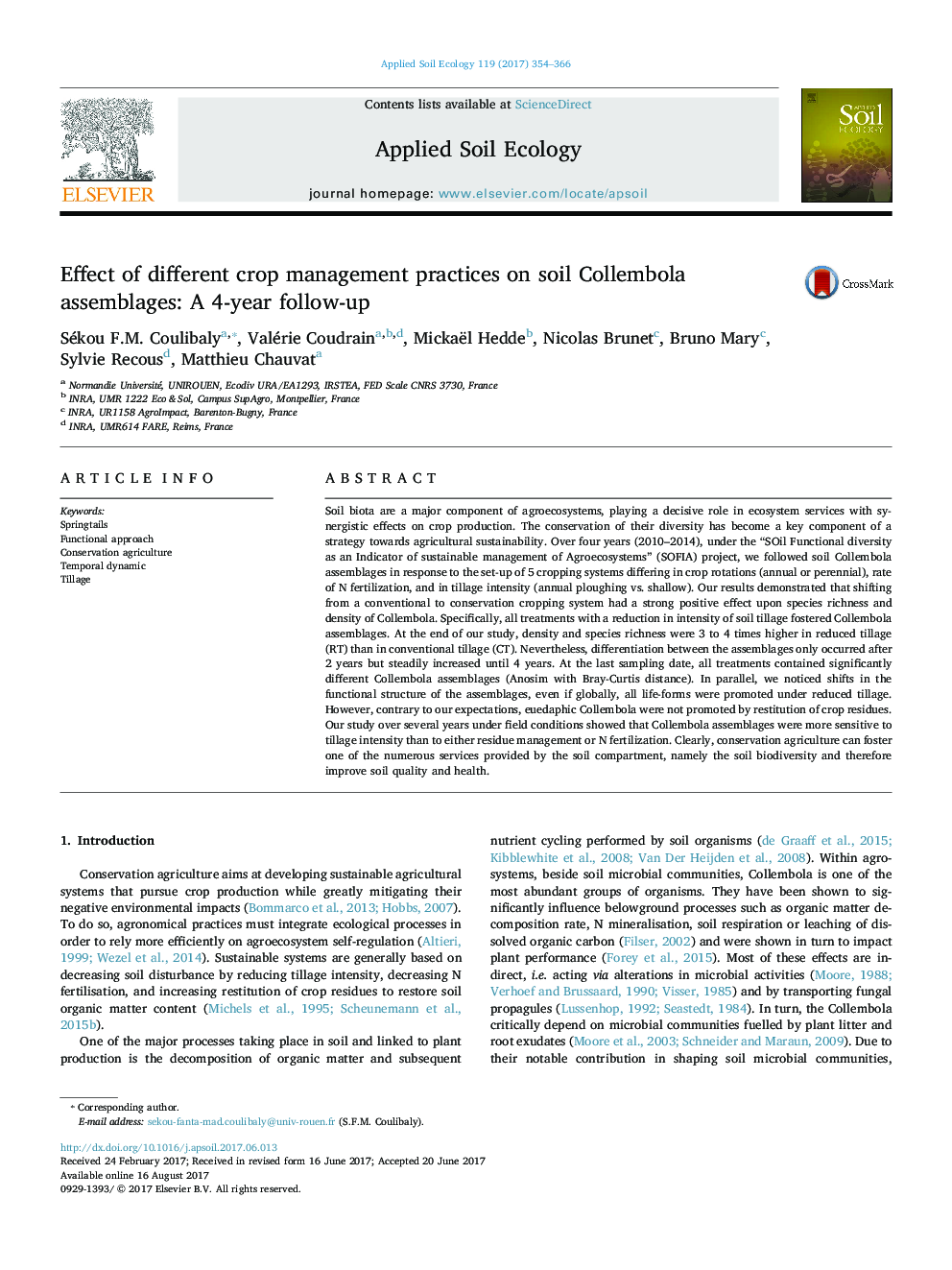| Article ID | Journal | Published Year | Pages | File Type |
|---|---|---|---|---|
| 5742641 | Applied Soil Ecology | 2017 | 13 Pages |
â¢Reduced tillage led to a general increase of individual numbers of Collembola.â¢Reduced tillage fostered the diversity of Collembola and of functional groups.â¢Restitution of crop residues had no effect on soil dwelling species.
Soil biota are a major component of agroecosystems, playing a decisive role in ecosystem services with synergistic effects on crop production. The conservation of their diversity has become a key component of a strategy towards agricultural sustainability. Over four years (2010-2014), under the “SOil Functional diversity as an Indicator of sustainable management of Agroecosystems” (SOFIA) project, we followed soil Collembola assemblages in response to the set-up of 5 cropping systems differing in crop rotations (annual or perennial), rate of N fertilization, and in tillage intensity (annual ploughing vs. shallow). Our results demonstrated that shifting from a conventional to conservation cropping system had a strong positive effect upon species richness and density of Collembola. Specifically, all treatments with a reduction in intensity of soil tillage fostered Collembola assemblages. At the end of our study, density and species richness were 3 to 4 times higher in reduced tillage (RT) than in conventional tillage (CT). Nevertheless, differentiation between the assemblages only occurred after 2 years but steadily increased until 4 years. At the last sampling date, all treatments contained significantly different Collembola assemblages (Anosim with Bray-Curtis distance). In parallel, we noticed shifts in the functional structure of the assemblages, even if globally, all life-forms were promoted under reduced tillage. However, contrary to our expectations, euedaphic Collembola were not promoted by restitution of crop residues. Our study over several years under field conditions showed that Collembola assemblages were more sensitive to tillage intensity than to either residue management or N fertilization. Clearly, conservation agriculture can foster one of the numerous services provided by the soil compartment, namely the soil biodiversity and therefore improve soil quality and health.
